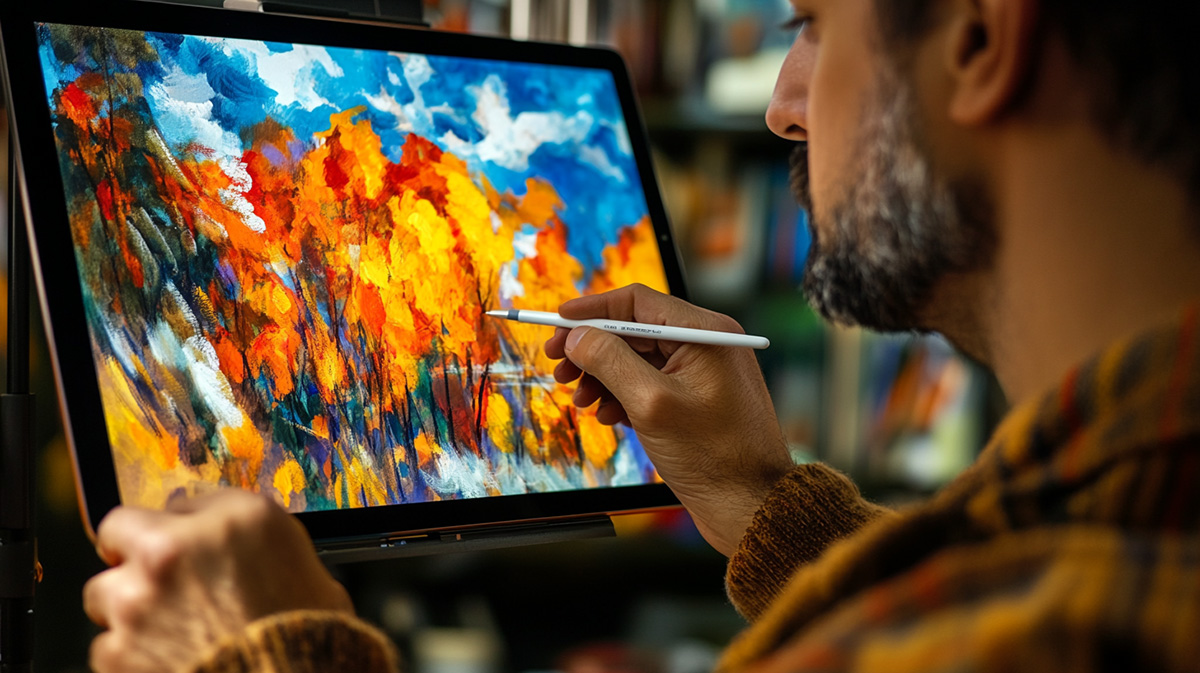AI and Human Creativity: Partners in Progress
In this rapidly advancing digital age, artificial intelligence (AI) stands at the forefront of a revolution, redefining the boundaries between technology and human creativity. As AI becomes more deeply integrated into our daily tasks and creative endeavors, it evolves from a mere tool into a vital partner. This shift invites us to rethink AI’s role—not as a threat to creativity, but as a catalyst that enhances and expands our potential. With AI by our sides, we are no longer just observers of innovation but active participants shaping a future where technology supports and enriches human creativity.
The Creative Process: Powered by AI
AI extends our creative capabilities across many industries, including graphic design, music production, and digital content creation. Rather than replacing artists and professionals, AI tools help develop ideas into refined, compelling work. In advertising, for instance, AI can generate foundational data and early design options that creative teams build upon to produce powerful campaigns. The result is a more dynamic and collaborative creative process.
Take the example of Ken Moskowitz and his work on a campaign for Ooni pizza ovens. Ken began by using AI to explore a range of slogans and messaging ideas based on the product’s features. The AI provided valuable information and inspiration, but it was Ken’s creative insight that led to the standout tagline: “Everything else is just half-baked.” That clever phrase emphasized Ooni’s ability to reach significantly higher temperatures than traditional ovens. In this case, AI acted as a strategic brainstorming partner, while the human touch turned insight into impact.
AI in Business: Strategic Creativity at Work
AI is also transforming creativity in the business world. Beyond operational efficiencies, it plays a growing role in driving strategic thinking and innovation. By analyzing large datasets, AI uncovers insights that inform new approaches to products, services, and customer engagement. Businesses that embrace this capability gain a competitive edge by staying responsive to market trends.
Just as importantly, AI automates routine tasks and frees employees to focus on higher-level problem-solving and creative work. This shift contributes to a more energized and fulfilling work environment, where innovation is encouraged and employees have space to contribute meaningfully.
Building a Culture that Welcomes AI
To realize AI’s full potential, organizations must cultivate a culture that sees AI as a collaborator. This means investing in training, encouraging experimentation, and fostering a mindset that values both innovation and adaptability. When teams understand how to use AI effectively, they integrate it more naturally into their workflows.
At Ardent Creative, for example, AI has become an important part of the process by converting sales call transcripts into detailed proposals. Automating this step has allowed the creative team to spend more time engaging with clients and developing customized strategies. As a result, proposals are not only delivered faster but also with greater strategic depth.
The Balancing Act: Challenges and Responsibilities
While AI offers substantial benefits, it also introduces complex challenges. The main concern is ensuring AI complements human creativity instead of replacing it. Maintaining this balance requires ongoing effort, especially as the technology evolves.
AI systems are not infallible. They can fail, behave unpredictably, or misinterpret data. These risks highlight the importance of human oversight. Even when AI tools are capable of self-diagnosis, it is human judgment that interprets the results and determines the best course of action.
In addition, staying current with AI developments is essential. Creative professionals must remain informed and open to change, integrating AI tools in ways that elevate their work without compromising originality or ethical standards. Issues such as data privacy, intellectual property rights, and bias in algorithms must also be addressed. Responsible AI use involves designing fair systems, safeguarding data, and establishing legal frameworks that account for both human and AI contributions.
Looking Ahead: Creativity Without Limits
The future of AI and creativity holds incredible promise. As this partnership evolves, it is transforming not only how we create but also what we believe is possible. Embracing AI does not mean giving up control; it means unlocking new levels of creativity and insight.
Professionals who learn to integrate AI effectively into their processes will shape the next wave of innovation. Whether in advertising, design, product development, or content creation, those who see AI as a partner will lead the way.
A Call to Create with Confidence
The journey forward invites us all — entrepreneurs, artists, and professionals alike — to explore how AI can enhance our creative potential. By engaging with this technology thoughtfully and creatively, we can redefine what is possible and usher in a new era of innovation. Now is the time to collaborate with AI and chart a future where technology empowers human imagination at every level.


